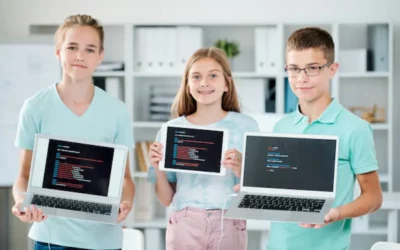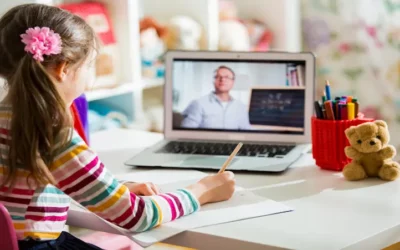Block coding offers a user-friendly gateway to the world of programming, making it an ideal starting point for parents and kids to explore coding concepts together. In this introduction to block coding, we will take you on a journey through the exciting realm of programming tailored for both parents and kids. Delve into a brief overview of block coding, an approach that simplifies complex programming concepts into visual, user-friendly blocks.
Discover the importance of introducing programming to young minds and explore the numerous benefits of using block coding as a learning tool.
In this blog, we’re excited to introduce you to the fascinating realm of block coding, tailored for both parents and kids. Block coding offers an accessible entry point into the world of programming, using visual elements to simplify complex concepts.
Table of contents
Understanding Coding Basics for Kids
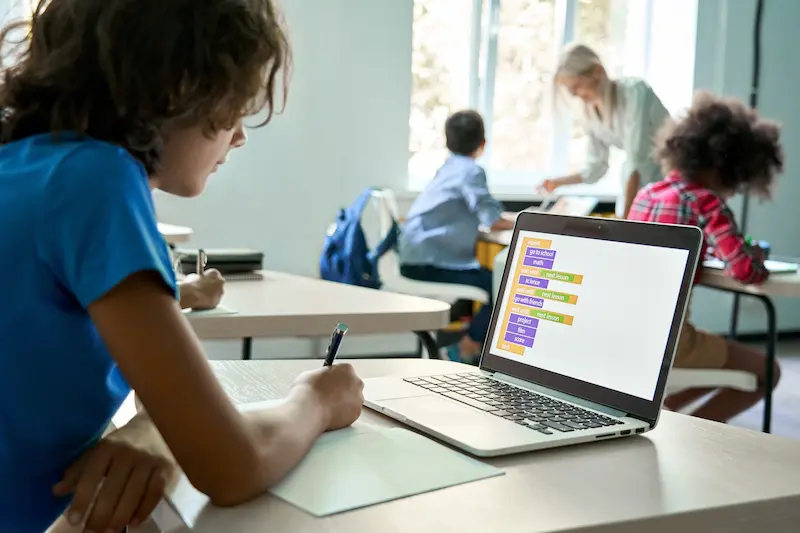
In this section, we’ll delve into the fundamental concepts of coding with a focus on young learners.
- Introducing Programming Concepts to Children:
Embarking on a journey into the world of coding at a young age can be an exciting adventure for both parents and kids. We’ll delve into the realm of programming for kids, exploring how introducing coding concepts to children can spark their curiosity and lay the foundation for valuable skills in problem-solving and logical thinking.
- How Block Coding Simplifies Complex Programming Logic:
Coding might seem complex, but with the introduction of block coding, it becomes more accessible than ever before. Block coding is a revolutionary approach that streamlines the intricacies of complex programming logic. By breaking down code into visual blocks that represent specific commands and functions, this method removes the need for intricate syntax and syntax-related errors. Block coding empowers programmers, especially beginners, to focus on the logic and flow of their code rather than syntax intricacies. This approach fosters a more intuitive and visual understanding of programming concepts, making it an ideal tool for teaching coding to kids and novices. With block coding, even intricate programming tasks become accessible, allowing developers to craft efficient and error-free code with ease.
- Bridging the Gap to Traditional Coding Languages:
As parents and kids eagerly dive into the world of coding, you might naturally wonder about the journey to more traditional coding languages. Don’t worry, because we’ll explore how the skills acquired through kids coding languages act as a valuable bridge, making the eventual transition to text-based coding languages much smoother and more seamless. Connecting the bridge between newcomers and established coding languages, fostering a smoother transition and understanding for those entering the world of programming.
Visual Coding: A Gateway for Young Minds
In this section, we’ll delve into the captivating world of free coding for kids, specifically designed to ignite the curiosity of young minds. Welcome to the fascinating realm of Visual Coding! For both parents and kids, this presents an exciting opportunity to embark on a journey of exploring the enchanting magic of programming together. Picture yourselves crafting interactive stories, games, and animations using vibrant blocks and engaging shapes.
Visual Coding makes learning to code an enjoyable adventure, allowing young minds to understand the building blocks of technology in a fun and intuitive way. So, let’s embark on this creative journey hand in hand, and unlock the endless possibilities of coding through captivating visuals and imaginative play.
The Advantages of Block-Based Coding
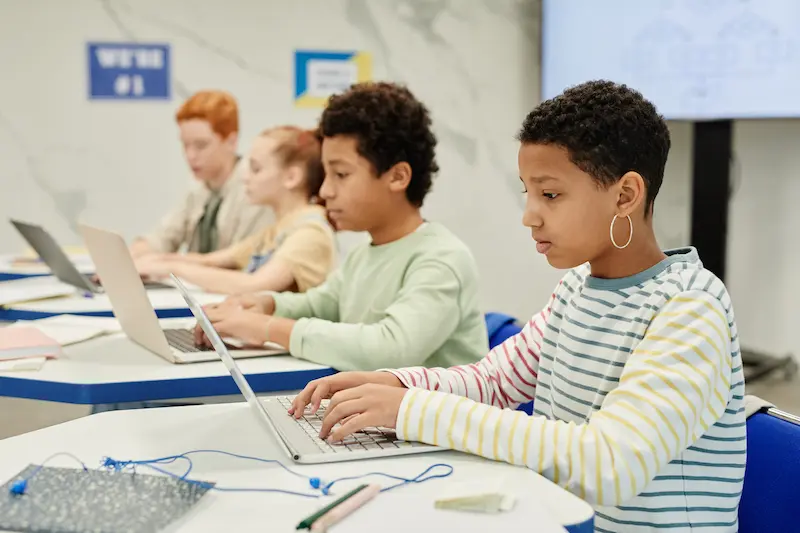
Discover the world of coding through block-based programming—a fun and engaging way for both parents and kids to embark on a learning journey together! By embracing block-based coding, children not only learn to create games and animations but also develop crucial logical thinking and problem-solving skills.
As they piece together code blocks like a puzzle, young minds intuitively grasp programming concepts, fostering a solid foundation for future learning in technology. If you’re on the lookout for the best coding classes for kids, you’ll find that these experiences enhance their cognitive skills while being incredibly enjoyable. With each achievement, a profound sense of accomplishment grows, boosting confidence and self-efficacy in kids. So, parents, dive into this exciting realm with your children, and watch as they thrive while having a blast with code!
Top 5 Coding Platforms for Kids
- Scratch (scratch.mit.edu)
Features:
User-friendly interface with drag-and-drop blocks.
A vast library of sprites and backgrounds for creative projects.
Online community for sharing and collaborating on projects.
Pros:
Widely used and endorsed by educators.
Encourages creative storytelling through coding.
Teaches fundamental coding concepts.
Cons:
Limited mobile compatibility.
Advanced projects might require transitioning to text-based coding.
- Blockly (developers.google.com/blockly)
Features:
Versatile block-based coding tool.
Customizable and adaptable for various age levels.
Integrates seamlessly with other Google tools.
Pros:
Offers a smooth transition from visual coding to text-based languages.
Provides a foundation for coding languages like JavaScript.
Supports offline use and integration into educational environments.
Cons:
May require some guidance for younger kids.
Interface might feel less visually appealing compared to other platforms.
- Tynker (tynker.com)
Features:
Engaging coding activities and puzzles.
Curriculum-aligned coding courses.
Parental dashboard to track progress.
Pros:
Curriculum supports a structured learning path.
Extensive library of creative coding projects.
Teaches coding in the context of game design and animations.
Cons:
Some advanced features are behind a paywall.
Limited free content compared to other platforms.
- Code.org (code.org)
Features:
Offers a range of coding courses.
Partnerships with well-known franchises for themed coding activities.
Hour of Code initiative for short, introductory lessons.
Pros:
Diverse coding curriculum suitable for various skill levels.
Strong emphasis on problem-solving and critical thinking.
Hosts unplugged activities for offline learning.
Cons:
Navigation might be overwhelming for younger children.
Progress tracking might require creating an account.
- LightBot (lightbot.com)
Features:
Puzzle-based coding challenges.
Teaches programming logic and sequences.
Available as an app for mobile learning.
Pros:
Focuses on teaching programming concepts intuitively.
Offers a mix of free and paid content.
Works well for short, engaging coding sessions.
Cons:
Limited scope beyond teaching basic programming concepts.
Some kids might outgrow the platform as they become more advanced.
Tips for Parents to Support Kids Coding Endeavors
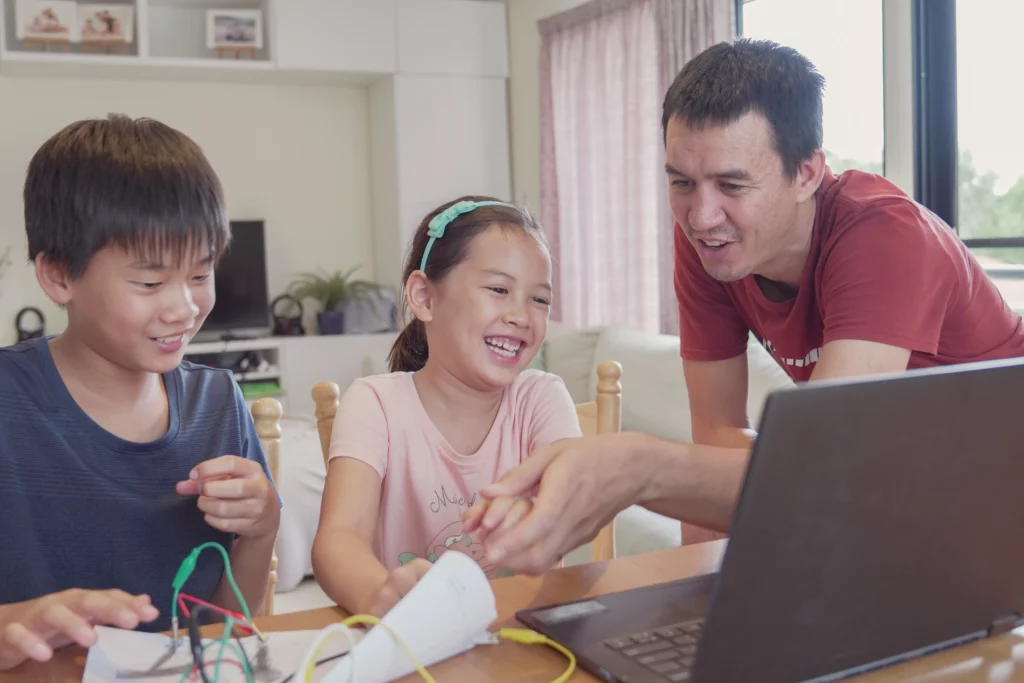
1. Fostering a Positive Attitude towards Coding:
Coding can be a source of inspiration and empowerment for kids. If you’re looking for ways to cultivate a positive attitude towards coding and learn coding for kids, here’s how you can do it:
Celebrate Small Wins: Acknowledge your child’s achievements, no matter how minor. Completing a project or solving a coding puzzle deserves recognition and praise. Recognize the value of every little accomplishment, using them to fuel your motivation and cultivate a sense of achievement on your path towards your goals.
Embrace Mistakes: Let your child know that mistakes are part of the learning process. Encourage them to learn from errors and see them as stepping stones to improvement. View mistakes as opportunities for growth and learning, allowing them to guide you toward improvement and innovation in your endeavours.
Highlight Real-World Applications: Show your child how coding is used in their favourite apps, games, and technologies, including coding games for kids. By exploring how coding brings their beloved digital experiences to life, they can grasp the real-world impact of programming, igniting a genuine enthusiasm for learning and creating with code.
2. Creating a Learning-Friendly Environment at Home:
A nurturing environment can make all the difference in your child’s coding journey. Here’s how to set up an ideal learning space:
Designate a Coding Corner: Create a dedicated area for coding activities. A comfortable workspace with a computer or tablet can enhance focus and creativity. Set up a dedicated space for coding activities, creating a focused environment that encourages consistent practice and exploration of coding concepts.
Provide Learning Resources: Keep coding books for kids, puzzles, and educational games accessible. A variety of resources can cater to different learning preferences and engage young minds in diverse ways.
Encourage Exploration: Allow your child to explore coding platforms and projects that pique their interest. Let them take the lead in choosing what to learn. Inspire a spirit of curiosity and discovery by urging individuals to venture into uncharted coding territories, fostering creativity and a deeper understanding of programming concepts.
3. Balancing Screen Time and Other Activities:
While coding is valuable, it’s important to strike a balance between screen time and other enriching activities:
Set Screen Time Limits: Establish clear guidelines for daily screen time. Balance coding with physical activities, hobbies, and social interactions. Establish specific time restrictions for digital device usage, promoting a balanced lifestyle that encompasses both productive coding activities and other offline engagements.
Create a Routine: Design a daily schedule that includes coding sessions, outdoor play, reading, and family time, while incorporating fun facts for kids. Consistency in this balanced routine aids in managing screen time effectively and promotes a well-rounded development.
Prioritise Offline Interaction: Ensure that your child has opportunities for face-to-face interactions with friends, family, and nature to maintain a healthy balance. Give importance to face-to-face communication and activities, fostering genuine connections and collaboration beyond digital platforms in coding and other aspects of life. Enrolling in coding classes for kids can provide opportunities for interactive and collaborative learning experiences.
Conclusion
Block Coding: Empowering Kids to Learn Programming Skills is an educational pathway that enables children to develop coding proficiency using visual blocks for enhanced learning. By fostering a positive mindset, creating a nurturing learning environment, and finding the right balance between screen time and other activities, young coders can embark on a path of creativity, problem-solving, and skill-building.
Together, families can discover the joy of coding, unlocking a world where imagination transforms into functional creations, and where the language of technology becomes a canvas for endless possibilities.
Explore the BrightCHAMP blog page to discover educational insights, tips, and strategies to enhance your child’s learning experience.
Frequently Asked Questions (FAQs)
A1. The ideal age for introducing block coding is typically around 7 to 10 years old, but it can vary based on individual readiness.
Q2. How Do Visual Coding Languages Prepare Kids for Advanced Programming?
A2. Visual coding languages lay a foundation for advanced programming by teaching logic, sequencing, and problem-solving, easing the transition to text-based coding languages.
Q3. Are There Coding Platforms That Cater Specifically to Younger Children?
A3. Yes, there are coding platforms like ScratchJr and Kodable designed specifically for younger children, offering age-appropriate interfaces and activities.
Q4. How Can I Motivate My Child to Stay Consistent with Learning Coding?
A4. Motivate your child by setting achievable goals, celebrating milestones, showing real-world applications of coding, and engaging in collaborative coding projects together.
Q5. What Career Paths Can Coding Skills Unlock for Kids?
A5. Coding skills can unlock various career paths such as software development, game design, robotics engineering, and even fields like data science and artificial intelligence.

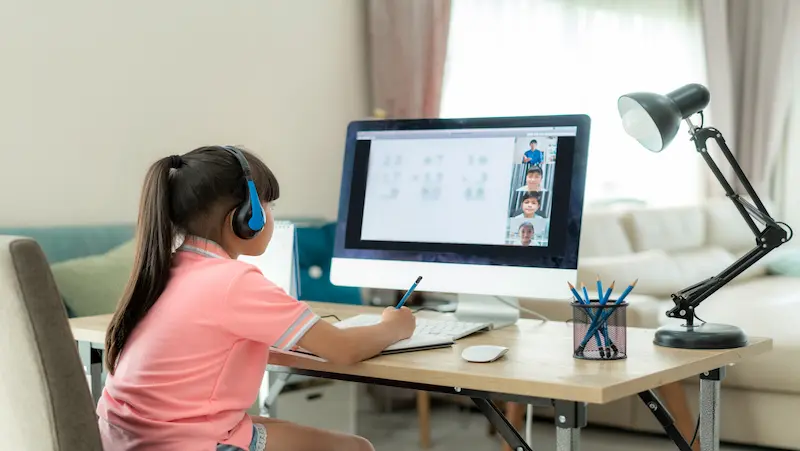
 We are an army of educators and passionate learners from BrightChamps family, committed to providing free learning resources to kids, parents & students.
We are an army of educators and passionate learners from BrightChamps family, committed to providing free learning resources to kids, parents & students.



